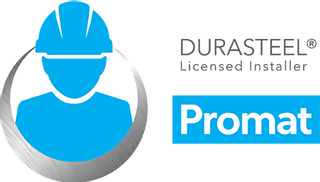Built-in or “passive” fire protection measures are used in most modern constructions. With road tunnels, the extent of passive fire protection is determined by assessment of the risk to those travelling within this environment, or the potential value placed on the goods carried and the value of the overall asset.
The European Directive 2004/54/EC on minimum safety requirements for tunnels in the Trans-European road network became effective in 2004. In almost all EU member states, the EU Directive considerably changed the legislative background of road tunnel safety as well as the relevant national technical guidelines. The EU Directive thus initiated an impetus towards harmonisation of regulations in Europe to improve the safety of the road tunnel users and the protection of the tunnel structure from failure in a fire.
Although there are no specific British Standards for fire protection in tunnels, a great deal of research has been carried out in recent years into fire development and temperatures. Hydrocarbon fires will develop quickly and reach much higher temperatures than less flammable materials. Throughout Europe, two fire curves are commonly specified as the base curves for modern tunnel fire protection designs; RWS (RijksWaterStaat) and HCM (HydroCarbon Modified – France).
Fire Board Panel Systems
Fire board panel systems have been developed to create a protective membrane either directly fixed to the structure or to a steel framing system. This framing system can be suspended from the load-bearing structure or, depending on the span of the ceiling, can be suspended along the walls of the tunnel only. From below the Fire board panels will be screwed or bolted to the suspended steel frame to enable the removal for inspection at a later date. In case of refurbishment of the tunnel, the protective membrane system is both technically and commercially the most feasible option.
Dependent upon the road tunnels design requirements, fire board panels can be coated to withstand the severe sulphur laden atmospheres encountered in road tunnels, whilst enabling ease of cleaning, increased light reflectance, and protection of the concrete from exhaust deposits, de-icing salts etc.
Fire Spray Systems
Fire spray systems have been developed as a proven method of fire protection for the tunnels industry. They include a range of integrated coating systems that restrict the effects of hydrocarbon fires on tunnel structures, and improve the sound absorption performance on the tunnel linings.
Fire spray systems are an applied, single package factory controlled premix, based on vermiculite and Portland cement, producing a monolithic coating able to withstand the thermal shocks experienced in a high intensity hydrocarbon fire. Concrete structures in particular, will be protected from explosive spalling when coated with fire spray products. Minimum practical thicknesses of 8mm unreinforced and 15mm reinforced, can be achieved offering the designer advantages should the traffic clearance envelope be critical within the road tunnel.
Dependent upon the road tunnels design requirements, fire spray systems can be trowelled smooth and coated to withstand the severe sulphur laden atmospheres encountered in road tunnels, whilst enabling ease of cleaning, increased light reflectance, and protection of the concrete from exhaust deposits, de-icing salts etc.









